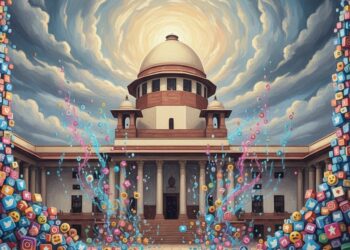Liberal tolerance may not be a virtue at all times, but fundamentalist intolerance is always a deplorable vice. And there have been many artists, writers, social reformers and spiritual leaders who have suffered on account of such intolerance. However, sooner or later – most often later rather than sooner – the world found a way of making peace with them as it realized that it could destroy a man but not his idea; that it could destroy the creator but not the creation. Maqbool Fida Hussain was one of those great creators who passed away before giving their oppressors the time and opportunity to build bridges. What’s even more painful is the fact that he had to breathe his last in a self-imposed exile necessitated by fundamentalist violence of the people who neither understood art, nor were ready to make an effort in that direction. Ignorant force thus prevailed over informed understanding.
Born on September 17, 1915, in Pandharpur, Maharashtra, Hussain learnt his craft on his own for the most part. He briefly attended an art school in Indore before moving to Mumbai – the then Bombay – to paint movie billboards for a living. The experience of painting colossal movie billboards is often cited as a reason for the unmistakable bold strokes and powerful lines characteristic of his work.
Husain shot to international fame when he joined Progressive Artists’ Group, which comprised of artists who wanted to break free of the nationalist moorings of the Bengal School of Arts. That was in late 1940s. After his first solo exhibition in Zurich in the year 1952, Husain’s work found appreciation in Europe and the US during the 1950s. Husain was awarded Padma Shree in 1955, Padma Bhushan in 1973 and Padma Vibhushan in 1991, and was also nominated to Rajya Sabha in 1986. However, despite having conferred some of the highest civilian awards on the artist of Husain’s national and international renown, the Indian State failed to defend his artist’s right to live and work in his own country. As a result the artist who had once enjoyed the enviable privilege of being a special invitee along with Pablo Picasso at the Sao Paulo Biennial in 1971 remained unwelcomed in the country of his birth.
The paintings that caused such a furore in the late 1990s and eventually led to Husain’s exile were done by the painter in 1970s and caught the attention of his critics and the masses alike when they were printed by a Hindi language magazine called ‘Vichar Mimansa’ in one of its issues that appeared in 1996 alongside an article titled M.F. Husain: A Painter or Butcher .
 In 1998, Husain’s house was vandalized by certain Hindu nationalist groups with the leadership of Shiv Sena endorsing the attacks. Some twenty-six Bajrang Dal activists were rounded up by the police in this connection. Eight criminal complaints were filed against Husain for painting Hindu goddesses in nude, and the Delhi High Court did find some merit in the accusations though the Court dismissed the complaints on the technical ground of non-compliance with the mandatory statutory requirement of obtaining government sanction prior to invoking provisions pertaining to the creation of disharmony on grounds of religion. Justice Kapoor wrote:
In 1998, Husain’s house was vandalized by certain Hindu nationalist groups with the leadership of Shiv Sena endorsing the attacks. Some twenty-six Bajrang Dal activists were rounded up by the police in this connection. Eight criminal complaints were filed against Husain for painting Hindu goddesses in nude, and the Delhi High Court did find some merit in the accusations though the Court dismissed the complaints on the technical ground of non-compliance with the mandatory statutory requirement of obtaining government sanction prior to invoking provisions pertaining to the creation of disharmony on grounds of religion. Justice Kapoor wrote:
If one has been granted unlimited freedom, one is required or expected to use it for good purpose and not with malicious intention, to defame or degrade religious deities may be mythological, as these immortals are held in highest esteem and over a period become part of one’s day-to-day religious life to such an extent that anything adverse said or printed or painted hurts the religious feelings immensely. Any objectionable, demeaning caricature or painting of religious deities or gods or goddesses of any particular religion creates disharmony and ill will amongst different communities. Even if it is presumed that such a painting is a piece of art still one cannot be oblivious of the fact that depiction of these deities or goddesses in full nudity comes within the mischief of deliberate and malicious act intended to outrage religious feelings of concerned religion as these goddesses are worshiped by crores of people. …. Under the garb of freedom of expression no person can be allowed to hurt the religious feelings of any class of people. [ Maqbool Fida Hussain v. State of Bihar , Crl. M (M) 420/2001; Decided on April 8, 2004]
However, when similar charges were pressed against Husain in 2006 following his painting Bharatmata in nude, another judge of the same High Court, Justice Sanjay Kishan Kaul, did not find any merit in the charges. Upholding right to free speech, Justice Kaul said:
No doubt, the concept of nation has had a long association with the idea of motherhood but just because the artist has expressed it in nude does not make the painting obscene per se. If the painting is seen as a whole, the revulsion referred to by ‘patriotic nationals’ would not arise for the reason that except the fact that it is in nude, there is nothing which can be considered as pinching to the eye.
Justice Kaul concluded the verdict saying, “A painter at 90 deserves to be in his home – painting his canvass.” That didn’t happen, unfortunately.
Originally written for and published in LAWYERS UPDATE as a part of ‘THE LAW AND THE CELEBRITIES‘ series in September 2011.





